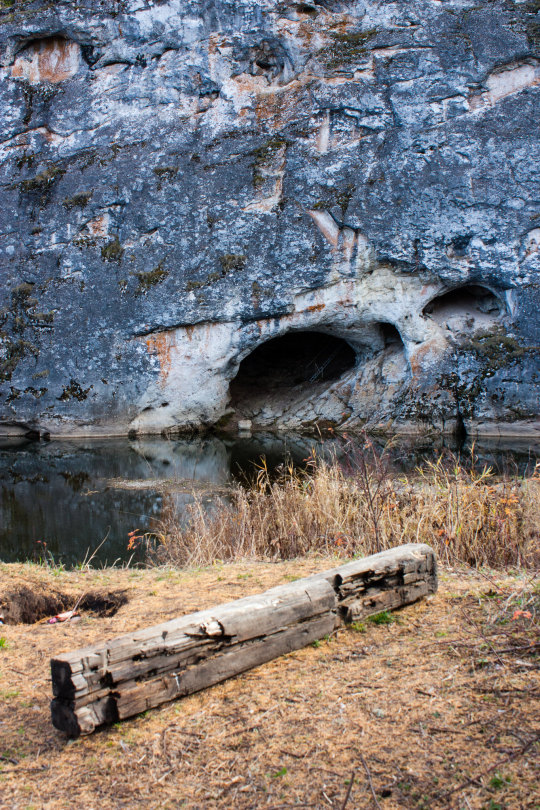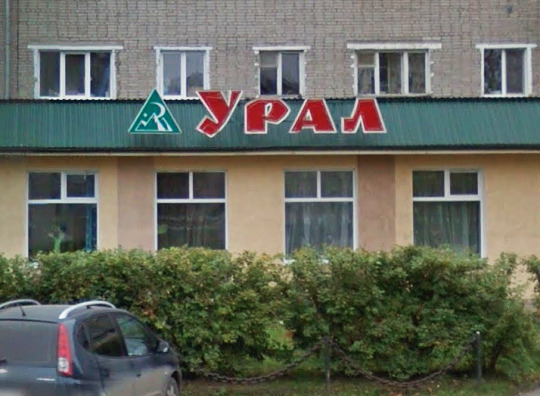#Sverdlovsk Oblast
Text

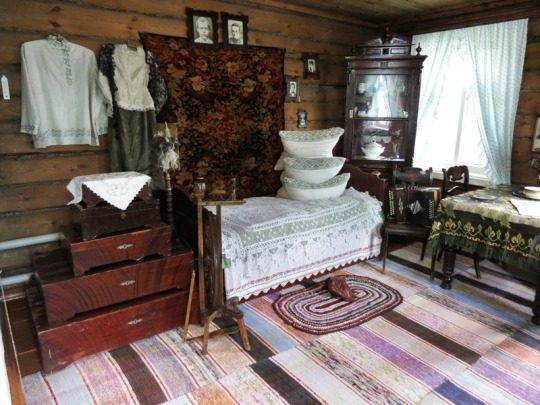
Pavel Bazhov house museum, Sysert, Sverdlovsk oblast
Pavel Bazhov was a writer, best known for his collection of fairy tales The Malachite Box, based on Ural folklore and published in the Soviet Union in 1939.
x
317 notes
·
View notes
Text

Siberian roe deer Capreolus pygargus pygargus
Observed by sundry_divers, CC BY-NC
50 notes
·
View notes
Text

Nizhny Tagil, 1954
Photographer: Semyon Fridlyand (Семён Фридлянд)
#Семён Фридлянд#Semyon Fridlyand#Nizhny Tagil#Нижний Тагил#1954#USSR#URSS#СССР#Sverdlovsk Oblast#Свердловская область#Russia#Rusland#Россия
18 notes
·
View notes
Text
If anyone knowledgeable about Russian folk clothing could help me find more information about the clothes from the Sverdlovsk Oblast. I'm specifically wanting to know if my home town (Nizhny Tagil) has its own traditional clothing or if it's more regional? Do I need to be looking at a place nearby like Yekaterinburg rather than my specific hometown? I've looked through museums websites in the area & I've done my best to search on VK & OK for folklorists who share information but I've hit a dead end & I'd really love some help.
I sew clothing & i'm wanting to make my own version of my hometowns clothes & if there's specific embroidery patterns i want to add them to clothes I already own. So if you can recommend ethnographers or folklorists, websites, books or even online shops, I'd really appreciate it.
Thank you! ❤️
#folk clothing#traditional russian clothing#russian embroidery#sverdlovsk oblast#nizhny tagil#Свердловская область#Нижний Тагил#ethnography#folklore#russian adoptee#sewing#textile history#needlework#requests#please help#historical sewing#historical costuming#hand sewing#Екатеринбург#Yekaterinburg#russian culture#russian history
8 notes
·
View notes
Photo
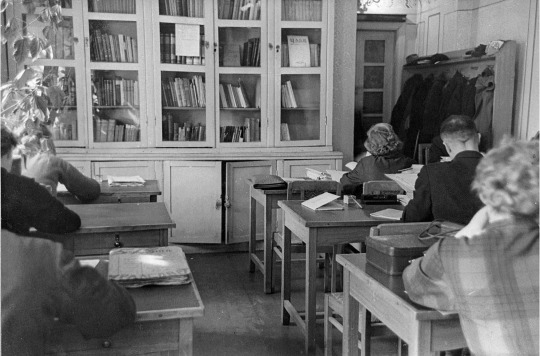
Reading room of the State Archive of Sverdlovsk oblast (USSR, 1958)
130 notes
·
View notes
Photo

Two silvery nuggets of Iridosmine, Native Osmium rich in Iridium
Locality: Neiva River, Sysert District, Nizhnii Tagil, Sverdlovsk Oblast, Russian Federation
#irdosmine#osmium#native osmium#iridium#alloy#native elements#rock#mineral#rocks#minerals#fossils#geology#mineralogy#russia#earth#nature
53 notes
·
View notes
Photo
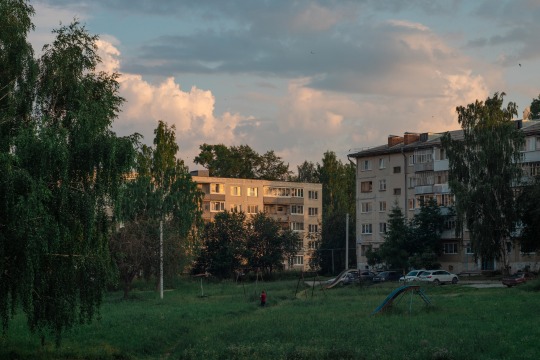
Verkhny Tagil, Sverdlovsk Oblast by Sanya Gdefoto
126 notes
·
View notes
Text

OPERATION CORPORATE :Air-to-air refueling in the Falklands/Malvinas War
Fernando Valduga By Fernando Valduga 06/12/2022 - 20:45 in History, Military, War Zones
Replenishment from Victor to Victor. Twenty-two of these meetings were required for each Black Buck mission from the Island of Ascension to the Falklands and return.
On April 2, 1982, Argentine forces invaded the capital of the Falkland Islands, Stanley, and quickly defeated a small British garrison. They then took control of the island of South Georgia. By the end of the month, 10,000 Argentine soldiers were stationed in the Falklands/Malvinas. They were mainly poorly trained and equipped recruits. England urgently needed to move its forces to the islands.
The next day, Prime Minister Margaret Thatcher told the House of Commons - in a very rare Saturday session - that "it is the Government's goal that the islands are freed from occupation and returned to the British administration as soon as possible".

The functions assigned to the RAF for Operation Corporate were reconnaissance, ground attack, transport of personnel and cargo, as well as the aeromedical evacuation of the injured during the conflict. The RAF also showed the psychological exercise of the demonstration of will and ability.
But although these tasks were clear, the resources to deliver them were much smaller. The distances were vast. Even from the advanced base at Wideawake Airfield on Ascension Island, there was no aircraft that could fly to the Falklands and return without support; tankers were vital and, of course, any aircraft that went so far had to be able to receive fuel from a tanker.

The view through the rear periscope of a Victor tanker while refueling a Vulcan bomber over the South Atlantic.
This limited the choice to Avro Vulcan. However, an increasingly smaller number of these Vulcans remained: only those who escaped retirement in museums or the torch. Some Vulcans were already on display in museums.
The unknown hero: the handley Page Victor refueler
As for the tankers, there were a few dozen Handley Page Victor K2, with the main task of supporting the English Electric Lightnings Rapid Reaction Force, defending Britain's Air Defense Identification Zone, mainly against Soviet aircraft that skirted the North Cape in the North Atlantic. The VC10 refuelers were not yet in service.
Quite simply, without the Victor tankers, Operation Corporate could not have been launched.

Victor as a V-bomber
Victor began his career in the 1950s as a strategic bomber, entering the service of the Bomber Command in April 1958. Together with his mission companions, the Vickers Valiant and the Avro Vulcan, his main objective was to transport the British atomic bomb 'Blue Danube' (weighing 10,000 lb / 4.5 tons) to Moscow. The previous generation of RAF bombers - Handley Page Halifax, Avro Lancaster/Lincoln and Boeing B-29 Washington, which the three V-Bombers were replacing, flew lower, were slower and equipped with weapons for self-defense, while the 1946 Operational Requirement against which both Victor and Vulcan were designed followed the same principle They should fly higher and faster to overcome the opposition: 500 mph (800 km/h) at 50,000 feet (15,000 meters). No Soviet fighter or anti-aircraft weapon could threaten them. Later, the Victors reached 620 mph (1,000 km/h) at 62,000 feet (19,000 meters).

But this invincibility would not last long. On May 1, 1960, a Lockheed U-2 reconnaissance aircraft piloted by Frances Gary Powers, borrowed from the United States Air Force to the Central Intelligence Agency, was shot down while flying over Sverdlovsk Oblast in the Ural Mountains of the USSR. Soviet air defense technology had reached altitude quickly. The Soviet missile S-75 Dvina (NATO SA-2 report name 'Guideline') could probably reach 70,000 feet. Right above the ceiling of the Victors and Vulcans. The V-Bombers were no longer safe at altitude.

The RAF V-Bombers: Valiant, Victor and Vulcan.
In early 1963, the Air Council recognized that improved Soviet air defenses meant that the V-Bombers could no longer expect to survive at a high level, so it introduced the need for low-level attacks: instead of flying at 50,000 feet, they would fly very low - 100 feet - in heavily defended areas of the Soviet Union.
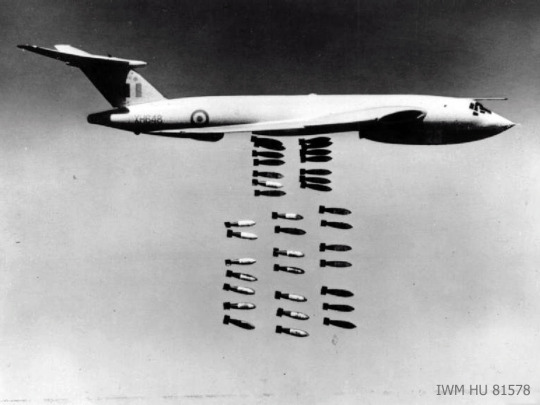
But the Victors were not able to fly at low altitude, where their most delicate wings could not withstand the tensions of the greatest turbulence.
What to do with all of them? Convert them into tankers.
The need for tanker planes
The early 1960s saw the introduction of English Electric Lightning into the Fighter Command (before becoming the Attack Command). Incredibly fast with twice the speed of sound, I was also desperately thirsty. The refuelers were vital to allow the Rapid Reaction Alert Lightnings to scare away the Soviet Tupolev Tu-95 'Bear'.
In 1965, with the sudden withdrawal from service of all Valiants due to wing fatigue caused by low-level air turbulence, the first Victors were converted into tank planes. Some Victors had two hoses and could still carry bombs, while others, later all, were three-point. The latter had one on each wing and a larger Hose Drum Unit (HDU) in the bomb compartment, thus losing its bombing capacity. Wing hoses were only suitable for lighter, hunting-style aircraft, while bombers and heavier transport aircraft had to use the axis hose for aerodynamic reasons.
The first Victors were launched for tank conversion, as the most powerful B2 variants began to be delivered in 1962, but in due course 24 of these B2s were converted into K2 tankers.

Although by Operation Corporate all Victors were converted into tank planes, a retro modified Victor carried out one of the first offensive operations flying a radar and visual reconnaissance mission to South Georgia.
During the combat phase of Operation Corporate, all aircraft going from Ascension to the south to the Falklands and fighters coming from the United Kingdom to Ascension required several tankers.
At the receiving end
The following individual types participated in Operation Corporate and benefited from air-to-air refueling to fulfill their missions:
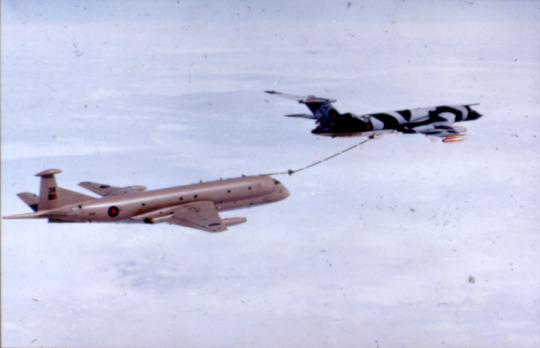
Hawker Siddeley Nimrod MR2
Nimrod carried out reconnaissance missions and provided navigation and search and rescue coverage to Harriers on their flights over the water from Ascension Island to the Task Force and also for Black Buck missions with the Vulcans. It also provided communications with nuclear attack submarines going "to the south".
These Nimrods had to have refueling systems installed for the first time for Operation Corporate, then on April 13, 1982 (only 11 days after the invasion), the Ministry of Defense made a request to Flight Refueling Ltd to install refueling equipment. The first test flight took place on April 30. The Nimrods were not designed for this, nor were there spare parts in stocks. Just like the Vulcans, museums and scrap depots were searched for pieces. Perhaps unbelievably, the Vulcan recently presented to Castle Air Base, California, was invaded by RAF engineering noncommissioned officers in civilian clothing to get the plumbing parts. After the conflict, Castle Air Base congratulated the RAF for this spectacular audacity. And he demanded that the pieces be returned.
With in-flight refueling, a Nimrod remained on patrol for 19 hours.
Tragically, however, the addition of in-flight refueling plumbing was a factor in the loss of the Nimrod "XV 230" over Afghanistan 24 years later: a fuel leak from the refueling causing a catastrophic fire and the death of all 14 military personnel on board.
Hawker Harrier GR3
The RAF frontline attack capabilities with combat capability in 1982 were limited to the McDonnell Douglas F-4 Phantom, Blackburn Buccaneer and Hawker Siddeley Harrier GR 3 jets. All three had air-to-air refueling capacity. But it would not be reasonable to expect a pilot to fly 8,000 miles in 16 hours - even if he had the ability to navigate, which he did not have. Even the aircraft didn't have enough oil for its engines at these distances. The only one of these three that was used was the Harrier GR3.
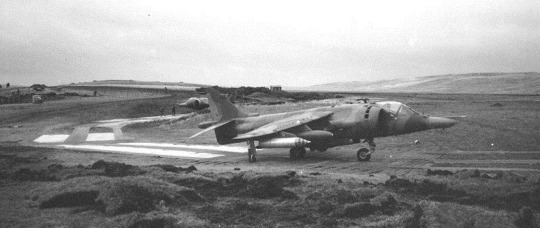
The RAF Harriers were initially assigned to Operation Corporate as friction substitutes for any Sea Harriers lost in combat. However, the losses were fortunately lower than expected. However, the integration of these aircraft with an aircraft carrier was far from simple, as about 30 modifications were required. Its inertial navigation systems are designed to be calibrated in a known fixed location, but of course an aircraft carrier never stands still. In fact, this mating with the aircraft carrier was never achieved, so GR3 pilots relied on a ruler, pencil and a 'Mk 1 eyeball' to aim at the bomb.
The engines didn't have the corrosion-resistant special coatings that the Sea Harriers had to combat the damage caused ?? by the air loaded with salt. Magnesium components (aluminum in Sea Harriers) reacted chemically to salt water. Naval transponders had to be installed, holes were drilled to allow water drainage, additional mooring points to handle the rolling and throwing of aircraft carriers in rough seas and the nose steering mechanism modified. However, despite all these modifications, a GR3 could never have been a direct replacement for a Sea Harrier as a fighter. Although the AIM-9L Sidewinders air-to-air missiles were installed, the Harrier had no radar.
Some flew from England to the Task Force, stopping at Yandun International Airport, Banjul (Gambia) and Wideawake Airfield on Ascension Island. They used large-sized fuel tanks and REVO probes, but records suggest that they did not fit the tips of the extension wings designed only for these transfer flights; a batch flew nonstop from St Mawgan to Ascension and, a few days later, straight to the Task Force, making their first landing on the deck of aircraft carriers in the middle of an air alert.
Lockheed Hercules
The workhorse of the transport fleet. In addition to lifting UK personnel and cargo for Ascension, they supported the Task Force flying south and uncharged skydiving equipment before leaving the UK and key personnel, including, it is said, special forces.
Marshalls of Cambridge Ltd installed refueling probes on 16 Hercules aircraft, allowing them to fly from Ascension to Stanley and return; flight lieutenant T Locke broke the record for resistance flying for 28 hours and 4 minutes to launch electrical components and missiles into a Rapier missile battery positioned around Port Stanley.
Avro Vulcan B2
At the end of their operational lives, the Vulcan were called upon to carry out what was then the longest bombings in the world - the almost 6,400 km of Wideawake Airfield, Ascension Island, Port Stanley, Falkland/Malvinas Islands, a 16-hour round trip - in the famous "Black Buck" attacks; it took 13 Victor tankers to place a Vulcan on the target, with 15 air-to-air refuelings (AAR) between the only Vulcan and between Victors (some of the latter flying two missions that night).
The Vulcans did not need the support of tankers for their European nuclear role, so most of the plumbing was removed and had to be replaced by spare parts and pieces found in museums and junkyards. And the current pilots had not been trained in air refueling, so a sixth crew member was added - an aircraft captain Victor qualified as an air-to-air refueling instructor.
The Vulcans in particular on the Black Buck missions were from a batch of Mark B2s that had several modifications in order to transport the Skybolt missile (intended to replace Blue Steel, but discarded). They had more powerful Olympus 301 engines, compared to the Olympus 201 of the other B2s. And since Skybolt had celestial navigation - it also had to see the stars - they had to be mounted on pillars under the wings, as well as the reinforcement and wiring left over from this intended function, now allowing ECM (electronic countermeasures) and Shrike anti-radiation missiles (radar).
Although the damage to Stanley Airport in the first of Operation Black Buck's attacks was modest (a 1,000-pound bomb on the runway), the psychological impact was profound. If a Vulcan could reach Stanley, it could also reach the continent. Thus, the powerful Mirage fighter jets that escorted the attacks on the Task Force were stopped to protect the country of origin.
Hawker Sea Harrier FRS 1
Colloquially called 'Shars', the Sea Harriers were assets of the Royal Naval Air Service, and benefited from the support of RAF (Victor) tankers and Nimrod air rescue aircraft on transfer flights.
The aircraft on board the ships HM 'Invincible' and 'Hermes' did not need support from tankers, but Squadron No. 809 flew from RNAS Culdrose to Ascension, with the assistance of tankers; a night stop was made at Yandun International Airport, Banjul, Gambia, then to Ascension. Large transfer fuel tanks with a capacity of 330 gallons (1,500 liters) were available for each internal pestle, but tests on the ski jump of the Royal Naval Air Station Yeovilton showed that they negatively affected the finish and stability, so that the standard 100-gallon (450 liters) combat tanks were used. Again, there is no evidence that the larger "translate wing tips", which added support, were installed.
But the flight was not without problems: a SHAR losing its oxygen system, having to fly at a much lower altitude, with higher fuel consumption; another SHAR and his handlebar Victor losing navigation systems so that all the formation depended on a man in their SHAR for routing; and a Victor being unable to deploy the hoses mounted on the wings, so the SHARs had But as a SHAR pilot said 'what the hell, this is war'.
Consequences
Argentine forces surrendered on June 14, 1982. However, the problem of the continuous protection of the Falklands/Malvinas Islands and their population from a renewed Argentine invasion, if the United Kingdom armed forces withdrew, has now come to light and, therefore, a significant military capacity had to remain in place, far beyond the nominal strength of the Royal Marines who had been the permanent garrison before the invasion. A very significant logistical and defense challenge.
From the RAF's point of view, this initially meant establishing a large air bridge.
Were the Victors being used ?? at a very unforeseen rate, consuming their lives of fatigue. Then, two somewhat drastic measures were necessary until the first VC10 tankers entered service: convert Vulcans and Hercules into tankers.
Part of the British aircraft that played an important role in England's victory in the war.
With the Vulcans, two additional fuel tanks were installed in the cavernous pump compartment and the HDU was inserted where the ECM equipment was in compartments in the tail, behind the rudder. The only basket was housed in a metal and wooden box below the back of the tail. An order was placed with British Aerospace in Woodford on May 4 and only 50 days later, June 23, the XH 561 was delivered to Waddington RAF Base; it carried out tests on the same day delivering fuel to another Vulcan and a Victor.
Hercules Refillers
As for Hercules, one solution - of the Heath-Robinson type - was the contract given to the Marshalls of Cambridge to convert 4 Hercules to play the role of tank planes, one of which would be based on Stanley and Ascension.
It is true that the U.S. Marine Corps has been using the KC-130 tankers since the early 1960s, but these were designed for the task, with additional poles for the external hoses of the external engines and the appropriate wiring and plumbing. But the RAF Hercules did not have this, so the solution adopted by the Marshalls was much faster and more brutal: adding tanks to the cargo area; putting an HDU in the cargo door; and drilling a hole in the door for the hose.
‘Toboggan’
Air-to-air refueling is a delicate and dangerous operation, where errors lead to fatalities. Two large aircraft need to fly at exactly the same speed and maintain the same positions relative to only tens of meters away - even at night and in severe turbulence.
The first propeller tanker refueled combat planes that were faster than them. Jet tankers - such as Victor - solved this problem, but Operation Corporate receivers and Hercules produced the same problem on the contrary: Victor tankers were too fast for Hercules receivers.
The solution was a technique known as a toboggan: the two aircraft climbed separately to altitude and then dived, gaining speed. This would allow Hercules to pick up and connect with Victor's basket. At a lower altitude, they separated, went up and repeated - several times, if necessary.
Continued service
The Victors continued to serve until Operation Granby, the First Gulf War in 1991, and was withdrawn to RAF service in October 1993.
But the last flight (to date) of a Victor was on August 25, 2009, during a high-speed taxi run by a museum piece that got out of control when Victor took command and tried to fly...
Tags: Military AviationFalklands/Malvinas WarHandley Page VictorHistoryRAF - Royal Air Force/Royal Air ForceREVO - Air RefuelingWar Zones - South Atlantic
Fernando Valduga
Aviation photographer and pilot since 1992, he has participated in several events and air operations, such as Cruzex, AirVenture, Dayton Airshow and FIDAE. He has works published in a specialized aviation magazine in Brazil and abroad. He uses Canon equipment during his photographic work in the world of aviation
HOME Main Page Editorials Information Events Collaborate SPECIALS Advertise About
Cavok Brasil - Digital Tchê Web Creation
Commercial
Executive
Helicopters
History
Military
Brazilian Air Force
Space
SPECIALS
Cavok Brasil - Digital Tchê Web Creation
98 notes
·
View notes
Text



Nizhnyaya Tura, Sverdlovsk oblast | Ph: Ekaterina Glukhikh
30 notes
·
View notes
Text
Reports from Russian sources indicate that Russia may attempt to use prison labor, overtime, and child labor to resuscitate the Russian military-industrial complex and fill general labor shortages. Russian opposition media source Meduza reported on November 29 that 250 convicts from Sverdlovsk Oblast will serve forced-labor sentences at a Russian tank and armored vehicle construction plant.
12 notes
·
View notes
Text
Events 5.1 (after 1950)
1956 – The polio vaccine developed by Jonas Salk is made available to the public.
1957 – A Vickers VC.1 Viking crashes while attempting to return to Blackbushe Airport in Yateley, killing 34.
1960 – Cold War: U-2 incident: Francis Gary Powers, in a Lockheed U-2 spyplane, is shot down over the Sverdlovsk Oblast, Soviet Union, sparking a diplomatic crisis.
1961 – The Prime Minister of Cuba, Fidel Castro, proclaims Cuba a socialist nation and abolishes elections.
1970 – Vietnam War: Protests erupt in response to U.S. and South Vietnamese forces attacking Vietnamese communists in a Cambodian Campaign.
1971 – Amtrak (the National Railroad Passenger Corporation) takes over operation of U.S. passenger rail service.
1975 – The Särkänniemi Amusement Park opens in Tampere, Finland.
1978 – Japan's Naomi Uemura, travelling by dog sled, becomes the first person to reach the North Pole alone.
1982 – Operation Black Buck: The Royal Air Force attacks the Argentine Air Force during Falklands War.
1990 – Angolan Civil War: The MPLA and UNITA agree to the Bicesse Accords, which are formally signed on May 31 in Lisbon.
1993 – Sri Lankan President Ranasinghe Premadasa is assassinated in Colombo in a suicide bombing carried out by the Liberation Tigers of Tamil Eelam.
1994 – Three-time Formula One champion Ayrton Senna is killed in an accident during the San Marino Grand Prix.
1999 – The body of British climber George Mallory is found on Mount Everest, 75 years after his disappearance in 1924.
2003 – Invasion of Iraq: In what becomes known as the "Mission Accomplished" speech, on board the USS Abraham Lincoln (off the coast of California), U.S. President George W. Bush declares that "major combat operations in Iraq have ended".
2004 – Cyprus, Czech Republic, Estonia, Hungary, Latvia, Lithuania, Malta, Poland, Slovakia, and Slovenia join the European Union, celebrated at the residence of the Irish President in Dublin.
2009 – Same-sex marriage is legalized in Sweden.
2011 – Pope John Paul II is beatified by his successor, Pope Benedict XVI.
2018 – Syrian civil war: The Syrian Democratic Forces (SDF) resumes the Deir ez-Zor campaign in order to clear the remnants of the Islamic State of Iraq and the Levant (ISIL) from the Iraq–Syria border.
2019 – Naxalite attack in Gadchiroli district of India: Sixteen army soldiers, including a driver, killed in an IED blast. Naxals targeted an anti-Naxal operations team.
2019 – Naruhito ascends to the throne of Japan succeeding his father Akihito, beginning the Reiwa period.
1 note
·
View note
Text
Cách cá cược tài xỉu 1 1/4 không thể đơn giản hơn

Tài xỉu 1 1/4 được chơi tại khá nhiều nhà cái uy tín, vì cách chơi dễ hiểu, người chơi dễ nắm được cách thức chơi cho nên đã có khá nhiều người yêu thích hình thức cá cược này. Liệu vậy bạn đã biết được các kiến thức cơ bản về kèo tài xỉu 1/4? Hãy bỏ chút thời giờ khám phá với 789Win nào!
Những thông tin cần nắm về tài xỉu 1 1/4
Tài xỉu 1 1/4 hay thường được hiểu là tài xỉu 1 1/4, 1.5, một quả rưỡi được áp dụng khá nhiều trong những trò cá độ như chơi bóng cỏ, esports, bóng đá, . .. các trò cá độ có tính chất đối chọi với kèo cá cược này sẽ được sử dụng.
Tài xỉu thông thường sẽ được đưa ra ngay sau hiệp 1 của trận đấu vì vậy người chơi sẽ dễ hơn trong vấn đề chọn cửa đặt cược. Bên cạnh đó, loại hình cá cược tài xỉu còn hấp dẫn được nhiều người chơi là dựa trên cách chơi dễ dàng hiểu và tiền thắng cá cược mang lại tương đối cao.

Nắm thông tin về tài xỉu được mọi người quan tâm
Người cá cược sẽ cần đưa ra dự đoán của bản thân căn cứ trên thực lực của từng đội tuyển, cân nhắc kỹ càng. Hoặc bạn có thể tham khảo thêm các kèo cá cược ngày trước kia của 2 đội tuyển đang đấu. Bạn có thể tham khảo ý kiến của nhà cái để có thể có những nhận định chuẩn xác nhất.
Cách chơi tài xỉu 1 1/4 chuẩn không cần chỉnh năm 2023
Tương tự với các kèo cá cược khác thì tài xỉu 1 1/4 sẽ có hai cửa cược chính đối với người chơi là Tài và Xỉu, kết quả chung cuộc sẽ căn cứ trên tỷ số cuối cùng của trận đấu mà xét. Những tình huống của cả thể xảy ra trong kèo cá cược này có thể nhắc đến như
Số bàn thắng của cả 2 bên là 2 hoặc nhiều hơn 2: điều này có thể tuỳ thuộc theo từng nhà cái sẽ có cách xét khác nhau, có thể là sẽ tính cho hiệp 1 hoặc toàn trận. Và nếu xảy ra tình huống ngược lại thì cửa Tài sẽ nhận toàn bộ tiền chiến thắng
Số bàn thắng có tổng là 1: đến khi trọng tài tuyên bố kết thúc cả trận đấu mà nếu hai bên chỉ có 1 cầu thủ làm bàn thành công thì người đặt Tài sẽ thua 1 nửa số tiền cược, người đặt cửa Xỉu sẽ thắng trọn tiền cược
Không có bàn thắng hợp lệ, tỷ số là 0 – 0: trong tình huống này những người đặt Xỉu sẽ thắng toàn bộ tiền.

Chơi tài xỉu cần phải biết được cách chơi
Giải thích kết quả ở cửa Tài trong tài xỉu 1.25
Để người chơi có thể hiểu kỹ hơn 789 Win sẽ nói về cách thắng cửa tài tại kèo tài xỉu 1 1/4,số tiền thưởng thu được khi thắng cửa cược tài thì nhà cái sẽ có một giải thích cụ thể giúp người chơi hiểu kỹ hơn.
Ví dụ: trong một trận đấu bóng của Lokomotiv Moscow vs Ural Sverdlovsk Oblast nhà cái đã đưa ra tỷ lệ cược của 2 cửa tài xỉu tương ứng là Tài 1.58, Xỉu 0.47. Nếu bạn tiền cược cửa Tài của người chơi là 200k thì sẽ có các tình huống khác xảy ra:
Tổng số bàn thắng 2 hoặc nhiều hơn 2, tỷ số 1 – 1, 0 – 2 hoặc 2 – 0: người đặt cửa Tài thắng với tổng số tiền là 200k * 1.58 = 316k
Tổng số bàn thắng là 1, 0 – 1, 1 – 0: người đặt Tài sẽ thua toàn bộ tiền cược là 100k
Tổng số bàn thắng là 0, tức 0 – 0: những ai đặt Tài sẽ thua 200k tiền cược
Giải thích kết quả cửa Xỉu trong tài xỉu 1.25
Tương tự với cửa Tài nhưng trái lại, cũng một trường hợp khác là trận đấu của Napoli vs Udinese, nhà cái đưa ra tỷ lệ cược là Tài 2.42, Xỉu 1.6, bạn cược 200k thì cũng sẽ hiểu cách xác định thắng cửa Xỉu như thế này
Nếu tỷ số 0 – 0, tức không có bàn thắng thì cửa Xỉu sẽ thắng với tổng số tiền thưởng là 200k * 1.6 = 320k
Nếu tỷ số là 0 – 1 hoặc 1 – 0, tổng số bàn thắng là 1 thì cửa Xỉu thắng nửa tiền thưởng là 100k
Tỷ số chung cuộc là 0 – 2, 2 – 0 hoặc 1 – 1, có tổng 2 bàn thắng trở lên thì cửa Xỉu thua trắng tiền thưởng.

Người chơi cần biết phân tính rõ các chỉ số
Những điều lưu ý khi chơi tài xỉu 1.25
Tài xỉu 1 1/4 là một trong các kèo cá cược được xem là tương đối dễ chơi, tuy nhiên người chơi cũng cần phải lưu ý một vài điều sau để gia tăng khả năng chiến thắng cho mình. Bạn cũng nên tham khảo thêm nhiều thông tin khác nữa về kèo tài xỉu.
Người chơi cũng nên theo dõi xuyên suốt toàn bộ trận đấu. Đánh giá chi tiết về khả năng của mỗi đội tuyển. Đưa ra mức cược thích hợp với tình hình tài chính cùng kinh nghiệm của mình. Không vì vội vàng, nóng nảy mà đưa ra các hành động sai lầm. Đặc biệt, xem xét trên phương diện tài chính hạn chế việc thua lỗ, mất mát tài chính.
Qua các chia sẻ kèo tài xỉu 1 1/4 ở trên, Win 789 cũng hy vọng rằng người chơi cá cược sẽ có được các thông tin thật bổ ích cùng cần thiết, để hỗ trợ người chơi mang lại được nhiều tiền thưởng. Kính mong những người chơi sẽ có thêm nhiều kiến thức cùng cảm nhận thú vị khi tham gia những trận đấu.
Read the full article
0 notes
Text
1960 – U-2 incident
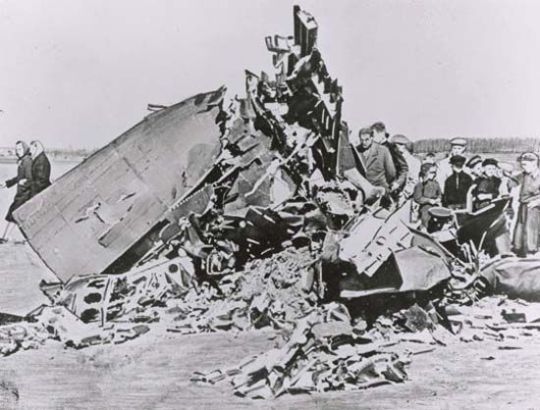

Francis Gary Powers, in a Lockheed U-2 spyplane, is shot down over the Sverdlovsk Oblast, Soviet Union, sparking a diplomatic crisis.
1 note
·
View note
Text
Where to Buy Construction Equipment in Yekaterinburg
Большой выбор моделей надежной складской техники! Всегда в наличии строительное оборудование. Выгодные цены на всё грузоподъемное оборудование. Поставка и гарантия в Екатеринбурге. https://advanta-ekb.ru/
If you are looking for construction equipment in Yekaterinburg, you are at the right place. Here you will find information on sales and warehouses in this city. You can learn more about the services offered by these companies, such as warranty and delivery.
warehouse and construction
Yekaterinburg is a city in Russia located on the eastern slope of the Middle Urals. Its population is approximately one million. The city is also the administrative center of Sverdlovsk Oblast, the fourth most populated oblast in Russia.
The Old Railway Station of Yekaterinburg was constructed in 1878. It has been renovated to include the Museum of the History of Science and Technology of the Sverdlovsk Railway. This building has an imposing dome, which is visible from many points throughout the city.
One of the most beautiful buildings in the city is the Sevastyanov House. This palatial mansion was built in the first quarter of the 19th century, and it's a testament to the city's wealth at that time. At the time it was painted in green tones, and it stands on a promenade along the Iset River.
There is an impressive number of historical monuments in the city. Some of them are of federal significance. They include the Palkinsky Stone Tents, which are ancient stone tents dating back to the sixth millennium BC.
The Yekaterinburg Museum of Fine Arts is the city's largest art museum. It has an impressive collection of Western European and Urals art, as well as Russian paintings of the 18th to 20th centuries.
Besides being a business and cultural center, Yekaterinburg is also a tourist destination. Many tourists visit the city to commemorate the memory of the last Russian emperor, who died in 1918.
Construction equipment for sales
When you ask manufacturers about their production plans for the coming year, they will likely tell you that sales in the construction equipment market are expected to go down. This is the fourth year in a row that the market has been in decline, and the trend seems to continue.
A major reason for this is the fact that there are increasing recycling fees, which make imported equipment less affordable. In addition, some cities are restricting the import of foreign special equipment.
However, the state support of Russian manufacturers and subsidies for design work are key factors in stabilizing the special equipment market. Leasing contracts are also important.
The largest company in the Ural region is Atomstroykompleks. It has its own equipment park, a design institute, and a number of contracting organizations.
Another important manufacturing enterprise is the DST-URAL plant. Its production of bulldozers is used by major enterprises of mining industries in Russia.
Also, the FoksTank plant produces tank axle units and European class cistern trucks. Yekaterinburg factories manufacture steel rollers, pipes, steam turbines, oil extraction equipment, and manufacturing equipment for other factories.
Another major supplier of construction equipment is JCB. The company has 80 dealers in Russia. JCB's latest model, the 467, boasts a five-speed transmission and a 30-percent greater productivity than its nearest competitor.
1 note
·
View note
